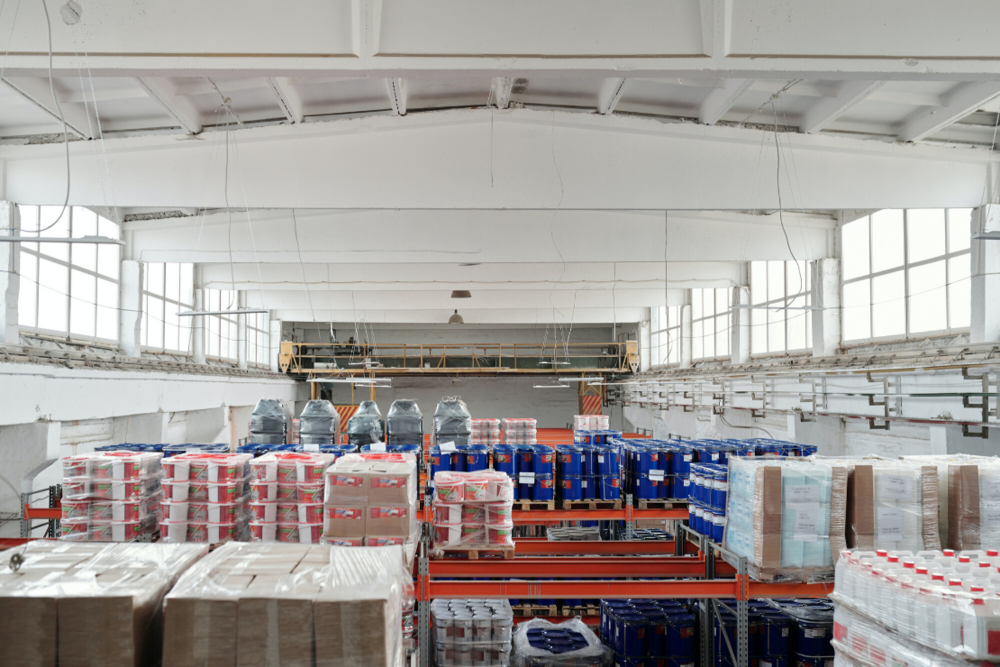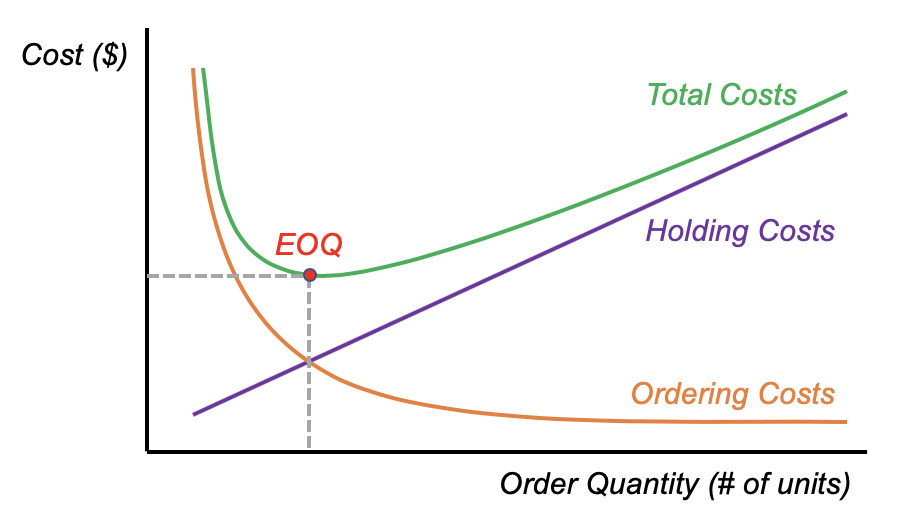Supply Chain Fundamentals: Fulfillment
Aug 19, 2020

Rich Mokuolu is the Cofounder and CEO of Partsimony. He has worked on numerous critical global supply chain initiatives across various multi-billion-dollar industrial companies. Partsimony completed the STANLEY + Techstars Accelerator in 2018, and is partnering with Techstars to support hardware entrepreneurs.
In part three of our three part “Supply Chain Fundamentals” series, we will be covering the fulfillment segment within supply chain networks.
Read part one in this series: Supply Chain Fundamentals: Sourcing, and part two, Supply Chain Fundamentals: Manufacturing.

As a refresher, supply chain can be defined as, “The sequence of processes involved in the production and distribution of a commodity.” From the above steps/nodes within a product life cycle, the supply chain encompasses the sourcing, manufacturing, and fulfillment processes.
Within the context of supply chains, Fulfillment can be defined as the process of receiving, preparing, and delivering orders. An example of fulfillment is the processes involved in delivering your Amazon or Uber Eats order.
Fulfillment plays a big part within the supply chain and is the last step in providing products to end customers. A sub-optimal fulfillment strategy can lead to critical failures which could negatively affect your business — or in the case of the COVID-19 pandemic, it could even cost lives.
In this write-up, we’ll cover the fundamentals of fulfillment and give you the necessary considerations to take into account when developing your fulfillment strategy. There are various topics we could cover in regard to fulfillment strategies, however, the most important fundamentals we’ll cover are logistics management, inventory management, and how to adapt to supply chain disruptions.
Logistics Management:
01. Landed cost
When evaluating supply chain strategies, it’s important to understand what the Landed Costs implications are on a given supply chain structure. Landed Cost is the total cost incurred of a product in transit from the factory floor to the buyer’s location. Landed Cost includes the price of goods, shipment costs, insurance fees, customs duties, and any other charges incurred along the way. Here’s the equation:
Landed Cost = Shipping + Customs + Insurance + Overhead
To further crystallize this, let’s take real life examples. Suppose you are looking to import 1,000 units of a product from China to New York. The per unit cost is $40. The freight cost for the shipment is $1,000 and it represents one-quarter of the shipment. The duty charge is set at 25%. The Landed Cost would be:
Landed Cost = Per Unit Cost + Freight Cost + Duty Charge
Landed Cost = $40 + (($1,000 * 25%) / 100 units) + (25% * $40) = $52.50 / unit
Now, let’s assume a scenario where your shipment is held in customs for three days and you are charged $100 for each day;
Landed Cost = Per Unit Cost + Freight Cost + Duty Charge + Additional Charge
Landed Cost = $40 + (($1,000 * 25%) / 100 units) + (25% * $40) + (($100 * 3) / 100 units)
Landed Cost = $55.50 / unit
That means with every passing day, the Landed Cost per unit increases by $1. This might not seem like much in this example, however, this could quickly add up when you’re shipping units in larger quantities and custom delays might present a huge risk to your profitability.
Understanding your Landed Cost better equips you to assess the profitability of your supply chain structure and provide you the framework to maximize your profit margins as you’re developing your supply chain network.
02. Warehousing
A warehouse is a building used for storing goods prior to delivering the goods to your customer/retail center. Warehouses are typically used by manufacturers, importers, exporters, wholesalers, transport businesses, customs, etc. By nature of the function of warehouses, facilities used as warehouses are typically large plain buildings in industrial parks located in areas with optimal logistical routes for trucks/trains/port access.
Warehouses play a big part in shortening lead times for delving products to customers. For example, when you make an Amazon Prime order, the product you ordered is typically shipped from an Amazon warehouse directly to your doorstep, rather than waiting for the factory/business to send the items to you directly.
Oftentimes, businesses opt to partner with a warehouse provider or Third-party logistics (3PL) provider to handle the logistics of fulfilling customer orders. Depending on the product you’re selling/business strategy, you could opt for a “Direct-to-Consumer” model and have products shipped from your warehouse vs. having it sold on Amazon/other 3rd party wholesalers.
03. Third-party logistics (3PL / TPL)
A Third-party Logistics (3PL) provider in logistics and supply chain management is an organization's use of third-party businesses to outsource elements of its distribution, warehousing, and fulfillment services. 3PL providers typically specialize in integrated operations of warehousing and transportation services that can be scaled and customized to a businesses' needs, based on market conditions, to meet the demands and delivery service requirements for their products.
From our earlier example, Amazon is an example of a 3PL provider that provides warehousing and fulfillment services for businesses selling on the Amazon marketplace. Important considerations to take into account when choosing a 3PL provider includes reviewing the 3PL for potential conflicts of interest, flexibility in service offerings, financial stability, etc.
At this time you might be tempted to use a 3PL for all your fulfillment needs. As always, deciding on going with a specific 3PL depends on many factors such as the stage of your business — it isn’t advisable to utilize a 3PL if you’re dealing with lower product volumes (i.e. less than 3,000 units).
Inventory Management
01. Stock keeping unit (SKU)
In Inventory Management, a Stock Keeping Unit (SKU) is a distinct identifier of an item for sale (e.g. a product). Oftentimes, SKUs will have a unique tracking code assigned to each product unit, indicating style, size, color, and other attributes — this could be alphanumeric or other Serial Number formats.
In the case of product/component recalls, it is important to know which SKUs/units of products are affected by the recall and understand where those products are located (either at a warehouse or with a customer). To better track SKUs, it is important to implement a robust Serial Number tracking system — down to the components used within a given product. This will enable you to understand which SKUs to recall/upgrade. Industries such as medical devices and automotive companies have robust tracking systems enabling them to act quickly in the event of a recall.
We will be using the term “SKUs” as we move forward in exploring inventory management principles within the supply chain.
02. Economic order quantity (EOQ)
Once you have your product ready for mass production, a crucial part in ensuring the success of your business is to determine the appropriate SKUs (i.e. product quantity) that enable you to meet you customer demands while mitigating the risk of sub-optimal cash flows/working capital.
To better manage working capital cash flows, it’s key to understand the principle of Economic Order Quantity (EOQ). EOQ is the optimum number of products you should purchase to minimize the total cost of ordering or holding stock. Simply put, it’s the number of SKUs you should order from the factory to ensure you don’t order too much or too little stock. Determining your EOQ can potentially save you a significant amount of money and save your business from working capital inefficiencies.
A visual representation of the principle of Economic Order Quantity (EOQ) is seen below:

Holding Costs: This represents the costs of carrying the inventory (i.e. storage costs)
Ordering Costs: This represents the costs associated with facilitating the order (i.e. transactional costs such as shipping and handling)
Total Costs: This represents the combined costs of the order (i.e. unit costs, holding costs, ordering costs)
The formula for calculating EOQ is:

Where:
S = Ordering cost or Fixed cost (per order, generally includes shipping and handling)
D = Demand rate (quantity sold per year)
H = Holding or carrying costs (per year, per unit)
It is important to note that the principle of EOQ assumes that;
Demand rate is known and relatively uniform
Unit costs are fixed
Ordering and Holding cost are fixed
In reality, these assumptions aren’t always perfect. However, the EOQ model is quite robust in practice and provides a guide in managing costs — thus improving your cash flows and optimizing working capital.
03. Safety stock
Safety stock is the additional inventory that is held by a company to mitigate risk of stockouts, caused by fluctuations in supply and demand. Simply put, you can think of safety stock as the minimum quantity of product you need on hand in case of demand/supply disruptions. For example, the inventory of iPhones and AirPods that should be made available at a given Apple store location is referred to as the safety stock level. The formula for calculating safety stock is:

To further crystelize the this concept, let’s take the example of the Apple AirPods Pro from our previous section. Let’s assume on an average day, Apple sells 10,000 AirPods. However, during weekends, they can sell as many as 15,000. As for lead times, their usual lead time is 30 days from the factory, but during typhoon season, it can go up to as high as 60 days. We would calculate the Safety Stock by:
Safety Stock = (15,000 SKUs x 60 days) - (10,000 SKUs x 30 days) = 600,000 SKUs
This means that Apple needs to have about 600,000 units of Safety Stock on hand to guard against unexpected disruptions (especially during typhoon season). Therefore, with 600,000 units in Safety Stock, selling about 80,000 AirPods on a good week (10,000 units per day on weekdays and 15,000 units on weekends), Apple will have enough stock to last a little over seven weeks.
As you might have already observed, the challenge with calculating adequate safety stock levels depends on the accuracy of the usage estimates. Also, if you are developing a new product and do not have the luxury of historical usage numbers, how do you identify the appropriate safety stock requirements? The temptation here is to have high safety stock levels to mitigate any disruptions (i.e. hoarding inventory). However, high safety stock levels could lead to significant risks in high inventory carrying costs and other working capital inefficiencies (i.e. storage costs in a warehouse, product obsolescence risk, etc.). The key to safety stock is to start with a reasonably small quantity based on lead times to replenish inventory stock and build over time as you get more data.
04. Reorder Point
Now that we’ve reviewed the principles of SKUs, Economic Order Quantity (EOQ), and Safety Stock, the next question becomes; how do you optimize when to reorder units?
In order to determine the level at which to re-order, you can use this formula:
Reorder Points = Lead Time Demand + Safety Stock
For example, if we were to calculate the Reorder Point for the AirPods Pro, we will first need to calculate the Lead Time Demand:
Lead Time Demand = Lead Time * Average Daily Usage
In our example, the Lead Time Demand would be:
Lead Time Demand = (30 days * 10,000 SKUs) = 300,000 SKUs
Therefore, the Reorder Point for the AirPods Pro would be:
Reorder Point = 300,000 SKUs + 600,000 SKUs = 900,000 SKUs
This means once Apple’s AirPod Pro stock hits 900,000 units Apple will need to place a new order with their suppliers. At 900,000 units, they’ll have enough to last them as they wait for new stock to arrive (300,000 units), while holding enough stock (600,00 units) as a buffer against an unexpected surge in demand or supply chain problems.
As you might have already observed, the demand for your product plays a significant factor in the quantities ordered for inventory management. Hence, it is important to constantly assess product demand in order to optimize your inventory and working capital cash flows.
How to Adapt to Supply Chain Disruptions
The medical supply shortages during the peak of the COVID-19 pandemic was an unfortunate example of what happens when established supply chains don't have plans in place to account for disruptions.
01. Source of truth
In order to effectively manage your supply chain, it is critical to have a central source of truth that provides real-time information on how your supply chain is performing.
It sounds fairly straightforward in theory, however, most companies struggle with having a central source of truth due to process silos and tools that require manual updates — Google spreadsheets are a great form for collaboration but aren’t sufficient to manage a dynamic supply chain. At Partsimony, we focus on providing a central source of truth for teams across hardware organizations which updates with real-time information critical for effective supply chain management.
02. Agile/Dynamic Supply Chains
The topic of supply chain resiliency tends to be one that most companies relegate to a one-time exercise of continuity planning in the event of an emergency that will be enacted in the event of an urgent event.
As the legendary boxer Mike Tyson once said: “Everyone has a plan until they get punched in the face.”
During the peak of the COVID-19 pandemic, you saw this punch to supply chains happen in real-time. Critically needed PPE and ventilators weren’t able to meet the needs of hospitals due to supply chain breakdowns — most of the Tier 2 and Tier 3 supply chains were concentrated in China which caused massive delays. If your supply chain alternatives were located in China, chances are your business would have seen huge disruptions.
The recommended way to approach supply chain resilience is to have multiple continent sources and a dynamic supply chain network that can adapt based on prevailing events. This is very hard to get right but we will be covering how Partsimony helps hardware organizations create dynamic and competitive manufacturing supply chains using machine learning.
Now that you’re familiar with supply chain fundamentals, we’ll cover the prevailing global supply chain dynamics pre-pandemic, during the COVID-19 pandemic, and when the time comes, post-pandemic to help you to be better prepared for the new supply chain paradigm.
Techstars partner Partsimony offers portfolio companies a 33% discount on the Partsimony platform. Partsimony will also be hosting regular mentorship sessions on important manufacturing supply chain topics.
This post was also published on Partsimony’s blog.

